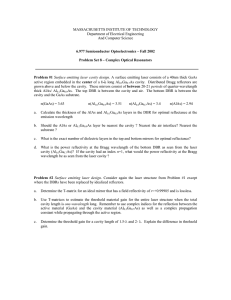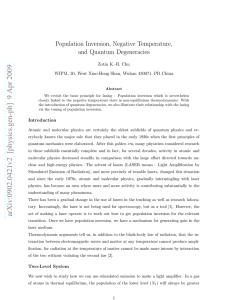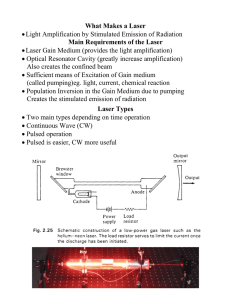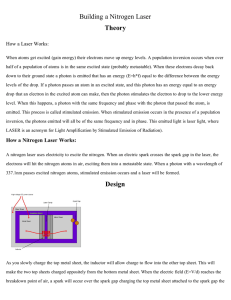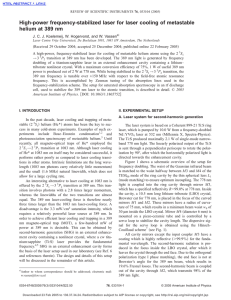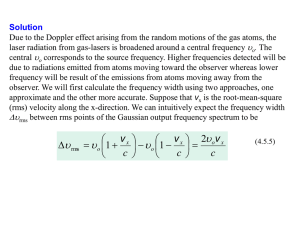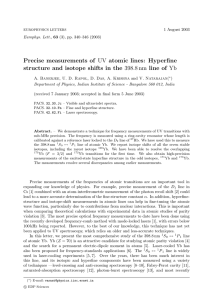MASSACHUSETTS INSTITUTE of TECHNOLOGY
advertisement
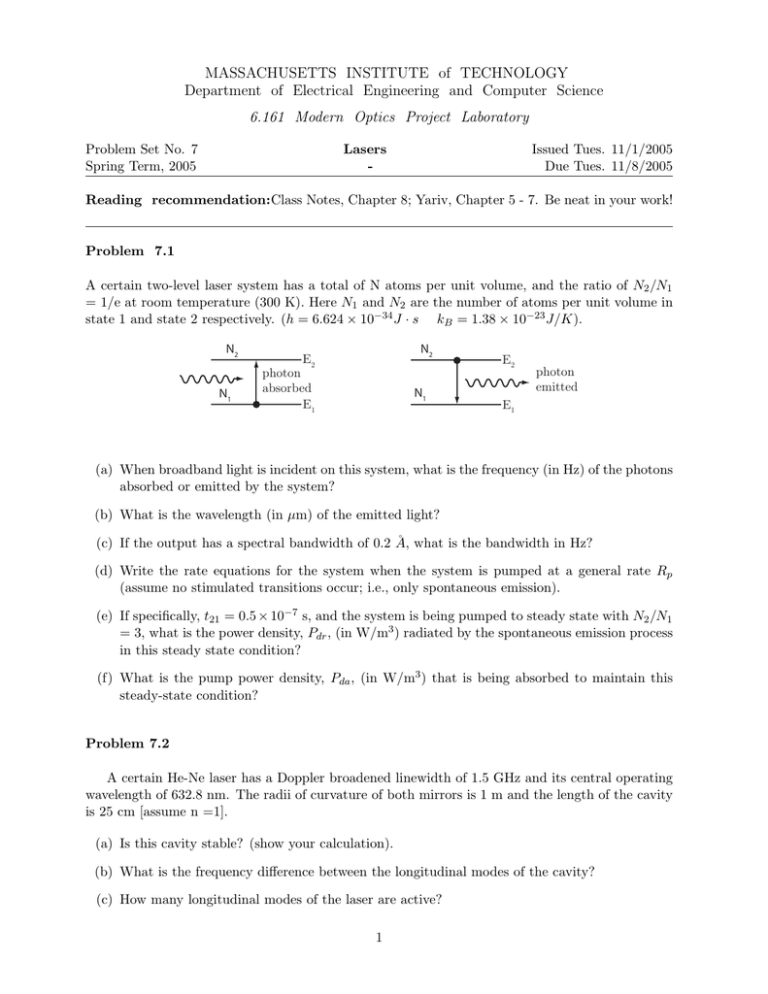
MASSACHUSETTS INSTITUTE of TECHNOLOGY Department of Electrical Engineering and Computer Science 6.161 Modern Optics Project Laboratory Problem Set No. 7 Spring Term, 2005 Issued Tues. 11/1/2005 Due Tues. 11/8/2005 Lasers - Reading recommendation: Class Notes, Chapter 8; Yariv, Chapter 5 - 7. Be neat in your work! Problem 7.1 A certain two-level laser system has a total of N atoms per unit volume, and the ratio of N2 /N1 = 1/e at room temperature (300 K). Here N1 and N2 are the number of atoms per unit volume in state 1 and state 2 respectively. (h = 6.624 × 10−34 J · s kB = 1.38 × 10−23 J/K). N2 N1 N2 E2 photon absorbed E1 N1 E2 photon emitted E1 (a) When broadband light is incident on this system, what is the frequency (in Hz) of the photons absorbed or emitted by the system? (b) What is the wavelength (in µm) of the emitted light? (c) If the output has a spectral bandwidth of 0.2 Å, what is the bandwidth in Hz? (d) Write the rate equations for the system when the system is pumped at a general rate Rp (assume no stimulated transitions occur; i.e., only spontaneous emission). (e) If specifically, t21 = 0.5 × 10−7 s, and the system is being pumped to steady state with N2 /N1 = 3, what is the power density, Pdr , (in W/m3 ) radiated by the spontaneous emission process in this steady state condition? (f) What is the pump power density, Pda , (in W/m3 ) that is being absorbed to maintain this steady-state condition? Problem 7.2 A certain He-Ne laser has a Doppler broadened linewidth of 1.5 GHz and its central operating wavelength of 632.8 nm. The radii of curvature of both mirrors is 1 m and the length of the cavity is 25 cm [assume n =1]. (a) Is this cavity stable? (show your calculation). (b) What is the frequency difference between the longitudinal modes of the cavity? (c) How many longitudinal modes of the laser are active? 1 (d) When this laser is mode-locked, what is the temporal separation between the output pulses as would be seen by a detector placed in the output beam?. (e) What is the maximum resonator length you would have chosen if single-longitudinal-mode operation was desired? Problem 7.3 For the ideal four-level system with allowed transitions as shown below, E1 ≫ kT . E3 E2 laser transition Rp E1 E0 (a) Write down the rate equations for this system in the presence of stimulated coherent radiation for the laser transition shown. (b) List a set of 4 conditions on the relaxation times that would be desirable to optimize the population inversion? (c) Using the rate equations along with the following specific simplifying assumptions: (1) t32 << t30 (2) t10 << t21 (3) t32 << t21 (4) t10 << t30 derive an expression for the steady-state population inversion Δn in the presence of stimulated coherent radiation for the laser transition shown [hint: use only a subset of the rate equations that are independent (no redundancy)] (d) What is the relation between the gain γ(ν) and the population inversion Δn that you just calculated? 2





